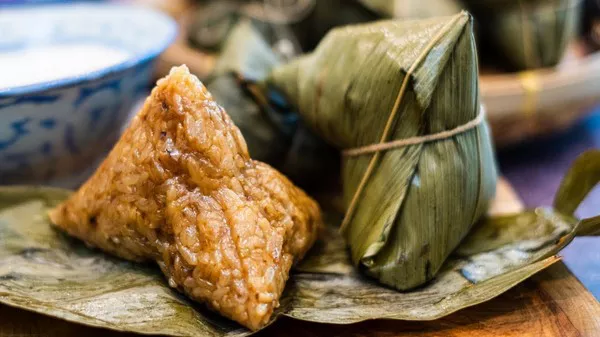Rice dumplings, known as zongzi in Chinese cuisine, stand as a testament to the rich tapestry of culinary traditions that grace our world. These delectable parcels, wrapped in bamboo leaves and filled with a savory or sweet mixture of glutinous rice and various fillings, evoke nostalgia and delight with every bite. Yet, achieving the perfect texture and flavor of these delicate morsels requires more than just culinary skill—it demands an understanding of the intricate nuances of steaming. In this comprehensive guide, we embark on a journey to unravel the mysteries of steaming rice dumplings, exploring variations in steaming times, providing detailed step-by-step instructions, and offering invaluable tips to ensure culinary mastery.
Steaming Time Variations
The cornerstone of a perfectly steamed rice dumpling lies in the mastery of steaming times. Let us delve into the factors that influence this crucial element:
1. Type of Rice Dumpling:
The composition of the filling plays a pivotal role in determining the optimal steaming time. Savory rice dumplings, filled with ingredients such as marinated pork, shiitake mushrooms, and salted egg yolks, typically require a longer duration to cook thoroughly. In contrast, sweet rice dumplings, filled with red bean paste, lotus seed paste, or sweetened glutinous rice, may have shorter steaming times due to the absence of raw meats or dense fillings.
2. Size of the Dumplings:
The size of the rice dumplings directly affects the steaming time. Larger dumplings, generously packed with filling and rice, necessitate a more extended period to ensure that the heat penetrates the core, cooking the ingredients uniformly. Conversely, smaller dumplings may require less time to cook through, given their reduced mass and volume.
3. Frozen vs. Fresh Dumplings:
Distinctions must be made between steaming frozen and fresh rice dumplings. Frozen dumplings, having undergone a freezing process, retain higher moisture levels and denser textures, thereby requiring an extended steaming duration compared to their fresh counterparts. It is advisable to thaw frozen dumplings before steaming to ensure even cooking.
4. Cooking Method:
While traditional steaming methods using bamboo steamers remain prevalent, modern innovations such as pressure cookers offer alternative approaches. Steaming rice dumplings in a pressure cooker can expedite the cooking process, thanks to the higher steam pressure and temperature achieved within the sealed environment. However, adjustments may be necessary to accommodate the differences in cooking dynamics between traditional and pressure steaming methods.
Instructions and Tips
To embark on the journey of steaming rice dumplings with confidence and finesse, let us outline the step-by-step instructions and invaluable tips:
1. Preparation:
Begin by selecting a suitable steamer pot or bamboo steamer basket large enough to accommodate the desired quantity of rice dumplings. If using bamboo leaves for wrapping, soak them in warm water to soften, making them pliable and easier to work with. Prepare the filling ingredients and glutinous rice mixture according to your chosen recipe.
2. Assembling the Dumplings:
Take a bamboo leaf or parchment paper, laying it flat on a clean surface. Place a generous spoonful of glutinous rice mixture in the center, followed by a portion of the desired filling. Fold the leaf or paper around the filling, shaping it into a triangular or rectangular packet. Secure the edges with kitchen twine or bamboo leaves, ensuring the dumpling is tightly sealed to prevent leakage during steaming.
3. Steaming Process:
Fill the steamer pot with an adequate amount of water, ensuring it does not touch the bottom of the steamer basket. Bring the water to a gentle boil over medium heat, then carefully arrange the prepared rice dumplings in a single layer within the steamer basket, leaving some space between each dumpling to allow for even steaming. Cover the steamer pot with a tight-fitting lid, trapping the steam within to cook the dumplings evenly.
4. Steaming Time:
The standard steaming time for rice dumplings typically ranges from 45 minutes to 1.5 hours, depending on factors such as the size of the dumplings and the type of filling used. Larger dumplings may require longer cooking times to ensure thorough cooking, while smaller dumplings may cook more quickly. To ascertain doneness, insert a toothpick or skewer into the center of a dumpling—if it emerges clean and the rice grains are tender, the dumplings are ready to be enjoyed.
5. Water Levels and Temperature Control:
Throughout the steaming process, monitor the water levels in the steamer pot, replenishing as needed to prevent it from boiling dry. Maintaining a consistent steam temperature is essential for even cooking and preventing scorching or unevenly cooked dumplings.
6. Preventing Stickiness:
To prevent the rice dumplings from sticking to the steamer basket, line it with banana leaves or parchment paper before arranging the dumplings. Alternatively, lightly grease the basket with oil to create a non-stick surface. This simple step ensures that the dumplings retain their shape and texture after steaming.
7. Checking for Doneness:
Aside from using a toothpick or skewer to check for doneness, visual cues can also indicate whether the rice dumplings are fully cooked. Look for a translucent appearance in the glutinous rice wrapper, signaling that it has absorbed the steam and softened during the cooking process. Additionally, the aroma of the filling ingredients may become more pronounced as they cook, tantalizing the senses with their fragrance.
8. Keeping Warm:
Once the rice dumplings are cooked to perfection, transfer them to a heatproof dish and cover them with a clean towel or aluminum foil to retain their warmth until serving. This simple yet effective method ensures that the dumplings remain piping hot and ready to be enjoyed by eager diners.
Additional Information
For those encountering common problems such as undercooked or mushy rice dumplings, troubleshooting tips and alternative cooking methods may offer solutions:
1. Troubleshooting Common Problems:
Undercooked dumplings can be remedied by extending the steaming time or increasing the steam temperature slightly. Conversely, mushy dumplings may indicate excessive moisture or overcooking—reduce the steaming time and adjust the filling-to-rice ratio for firmer results.
2. Variations in Steaming Methods:
While traditional steaming methods remain timeless, alternative approaches such as using a rice cooker or microwave offer convenience and versatility. Experiment with different cooking techniques to discover which yields the desired texture and flavor profile for your rice dumplings.
3. Recipe Suggestions:
For culinary enthusiasts seeking inspiration, a myriad of rice dumpling recipes awaits exploration. From classic renditions passed down through generations to innovative fusion creations, there is no shortage of delightful flavors and combinations to tantalize the taste buds.
4. Cultural Significance and Traditions:
Beyond their culinary appeal, rice dumplings hold profound cultural significance in various societies, particularly during festive occasions such as the Dragon Boat Festival in China. Delve into the rich traditions and customs associated with rice dumplings, uncovering the stories and legends that have shaped their enduring legacy.
Conclusion
In conclusion, mastering the art of steaming rice dumplings is a journey marked by precision, patience, and a profound appreciation for culinary heritage. By understanding the nuanced interplay of factors influencing steaming times, following clear instructions, and implementing invaluable tips, you can elevate your rice dumpling experience to new heights of gastronomic excellence. Embrace the challenge, savor the process, and indulge in the irresistible allure of perfectly steamed rice dumplings—where every bite is a symphony of flavors and memories, woven together in the timeless tapestry of culinary artistry.



























